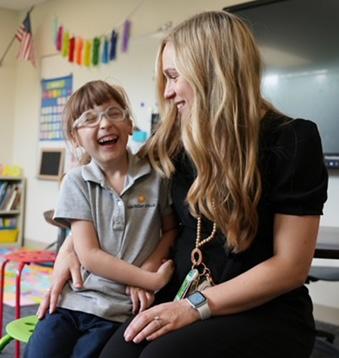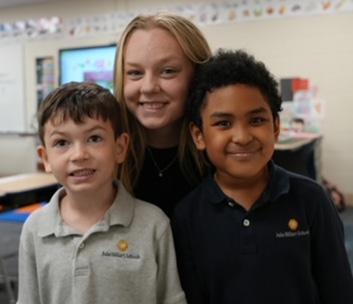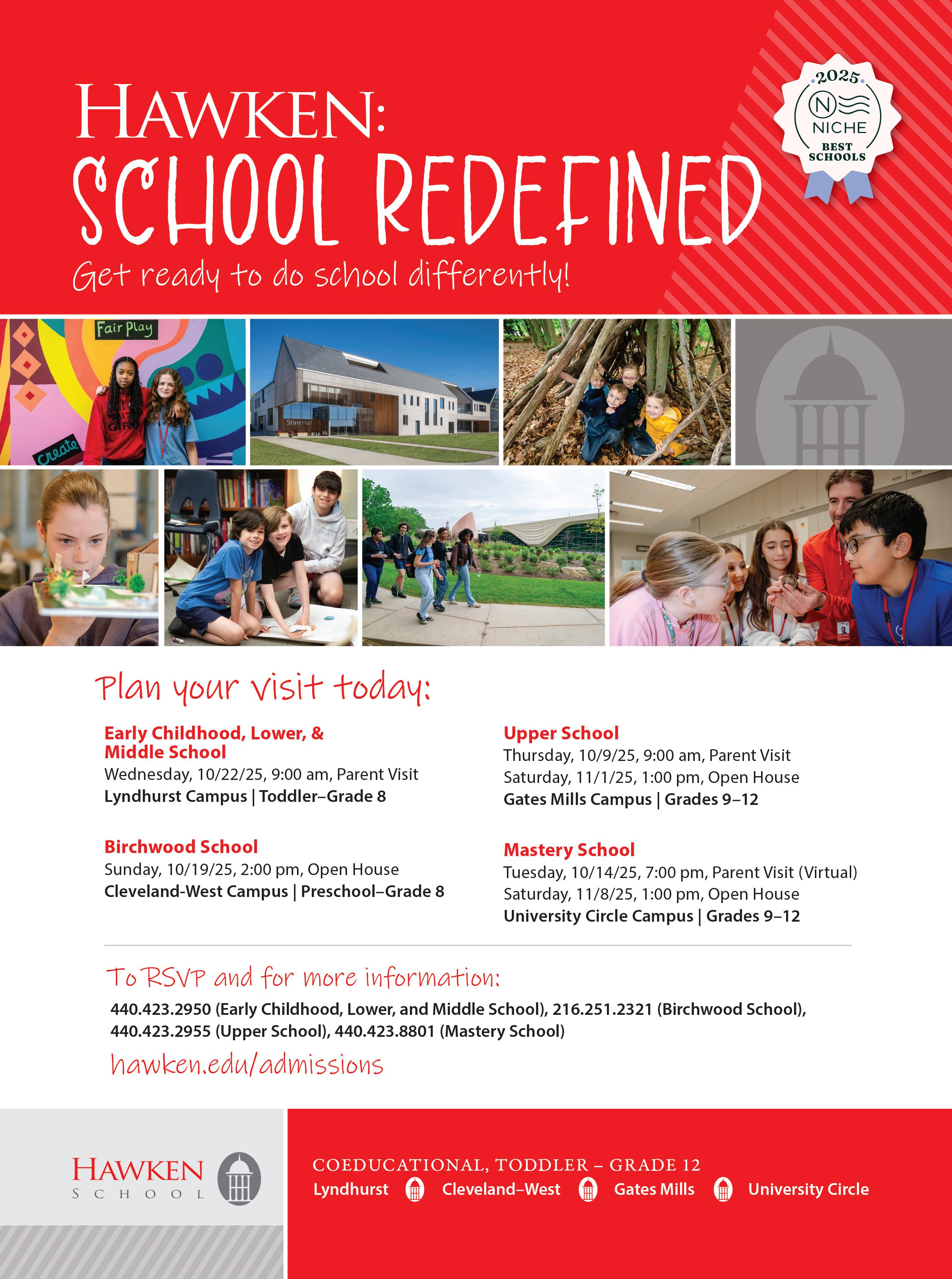










Staying connected as kids near their teen years and become more independent may become a challenge for parents. But it’s as important as ever — if not more so.
As children enter the preteen phase of life, activities at school, new interests and a growing social life become more and more of a focus for them. Even so, parents are still important anchors in the life of a preteen, providing love, guidance and support.
A connection to their parents gives preteens a sense of security and helps build the resilience kids need to roll with life’s ups and downs.
This can be a difficult phase for parents. Your preteen may suddenly act as if your guidance isn’t welcome or needed, and even seem embarrassed by you at times. This is when kids start to confide more in peers and request their space and privacy — expect the bedroom door to be shut more often.
As hard as it might be to accept these changes, try not to take them personally. They’re all normal signs of growing independence. The best way to deal with them is through balance: allow growing room by expanding boundaries while continuing to enforce important house rules and family values. For example, a child who asks for more privacy might be allowed to earn the privilege of getting a bedroom door lock by doing household chores for a set amount of time.
Parents don’t have to let go entirely. You’re still a powerful influence — it’s just that your preteen might be more responsive to the example you set rather than the instructions you give. Be sure to practice what you’d like to preach; just preach it a little less for now.
By modeling the qualities that you want your preteen to learn and practice — respectful communication, kindness, healthy habits and fulfilling everyday responsibilities without complaining — you make it more likely that they will comply.

Small, simple things can reinforce connection. Make room in your schedule for special times, take advantage of the routines you already share, and show that you care.
- CONTINUED ON PAGE 36 -

A connection to their parents gives preteens a sense of security and helps build the resilience kids needs to roll with life’s ups and downs.

• Family meals: It may seem like a chore to prepare a meal, particularly after a long day. But a shared family meal can provide valuable together time. Scheduling the meal just as you would any other activity can be a helpful way to make sure that it is a priority in your day. Whether the meal is homecooked, take-out or somewhere in-between, sit down together. Turn off the TV and put away cellphones. If shared mealtime is impossible to do every night, schedule a regular weekly family dinner on a night that fits kids’ schedules. Make it something fun and consider getting everyone involved in the preparation and cleanup. Sharing an activity helps build closeness and connection, and everyone pitching in reinforces a sense of responsibility and teamwork.
• Bedtime and goodnight: Your child may not need to be tucked in now, but maintaining a consistent bedtime routine helps preteens get the sleep needed to grow healthy and strong. So work in some winding-down time together before the lights go out. Read together. Go over the highlights of the day and talk about tomorrow. And even if your preteen has outgrown the tuck-in routine, there’s still a place for a goodnight kiss or hug. If it’s shrugged off or makes your preteen uncomfortable, be respectful of their physical boundaries and try a gentle hand on the shoulder or back as you wish your child a good night’s sleep.
• Share ordinary time: Find little things that let you just hang out together. Invite your preteen to come with you to walk the dog. Ask if you can join them on their run. Washing the car, baking cookies, streaming a movie, watching a favorite TV show — all are opportunities to enjoy each other’s company. Time spent together is a chance for kids to talk about what’s on their mind. Even riding in the car is an opportunity to connect. When you’re driving, your preteen may be more inclined to mention a troubling issue. Since you’re focused on the road, they don’t have to make eye contact, which can ease any discomfort about opening up.
• Create special time: Make a tradition out of celebrating family milestones beyond birthdays and holidays. Marking smaller occasions like a good report card or the end of a sports season helps reinforce family bonds.
• Show affection: Don’t underestimate the value of saying and showing how much you love your preteen. Doing so ensures that kids feel secure and loved while demonstrating healthy ways to show affection. Still, preteens may start to feel self-conscious about big displays of affection from parents, especially in public. They may pull away from your hug and kiss, but it’s important to recognize that this is about boundaries, not about you. Reserving this type of affection for times when friends aren’t around can be helpful. When in public, find other ways to show that you care. A smile or a wave can convey a warm send-off while respecting important physical boundaries. Recognize out loud your child’s wonderful qualities and developing skills when you see them. You
might say, “That’s a beautiful drawing — your art skills have grown so much this year” or “You worked so hard during baseball practice today — I loved watching you out there.”
• Stay involved: Stay involved in your preteen’s expanding pursuits. Getting involved gives you more time together and shared experiences. At the same time, recognize that it is OK for your child to want to do activities independently. You don’t have to be the Scout leader, homeroom mom, or soccer coach to be involved. Go to games and practices when you can; when you can’t, ask how things went and listen attentively. Help kids talk through the disappointments, and be sympathetic about the missed fly ball that won the game for the other team. Your attitude about setbacks will teach your preteen to accept and feel OK about them, and to summon the courage to try again.
• Stay interested: Stay interested and curious about your preteen’s ideas, feelings and experiences. Understand that it’s OK for their opinions to be different from your own. If you listen to what they’re saying, you’ll get a better sense of the guidance, perspective and support needed. Respond in a nonjudgmental way and your child will be more likely to come to you when tough issues arise.
• Manage electronic devices: As kids get older, they’re more likely to have (and increasingly use) their own tablets, laptops or phones. While some screen time is a helpful way for preteens to stay connected with their friends, excessive or unrestricted use can lead to challenges and reduce the quality and frequency of family time. Set limits consistent with your values while allowing freedom within those limits. Don’t spy on social media and text conversations unless it’s necessary for your child’s safety and well-being. Settings that limit screen time and filters for apps, programs, games and parental control sites can help you enforce boundaries. Finally, make sure that you model healthy electronics use.
• Shift your communication style: Your preteen’s newfound independence will probably lead to some important changes in communication. While a young child might appreciate you solving a problem with a friend by calling their mother, a preteen probably won’t want this type of solution. For many preteens, the point of discussing a life challenge with a parent is no longer about parent problem-solving; it’s about listening and support. You might feel the urge to solve every problem your preteen mentions (or call their teachers or friends to deal with it directly). But for small problems, remember that they might be looking for a place to vent and the support to figure it out on their own. When you hear about a problem that doesn’t need an adult solution, try saying something like, “That sounds really tough, I can see why it would make you angry. I’m here for you if you need anything or want to talk about it a little more.” If they want help, they’ll ask you for it. Your support, listening and empathy will help them feel empowered to find solutions on their own.
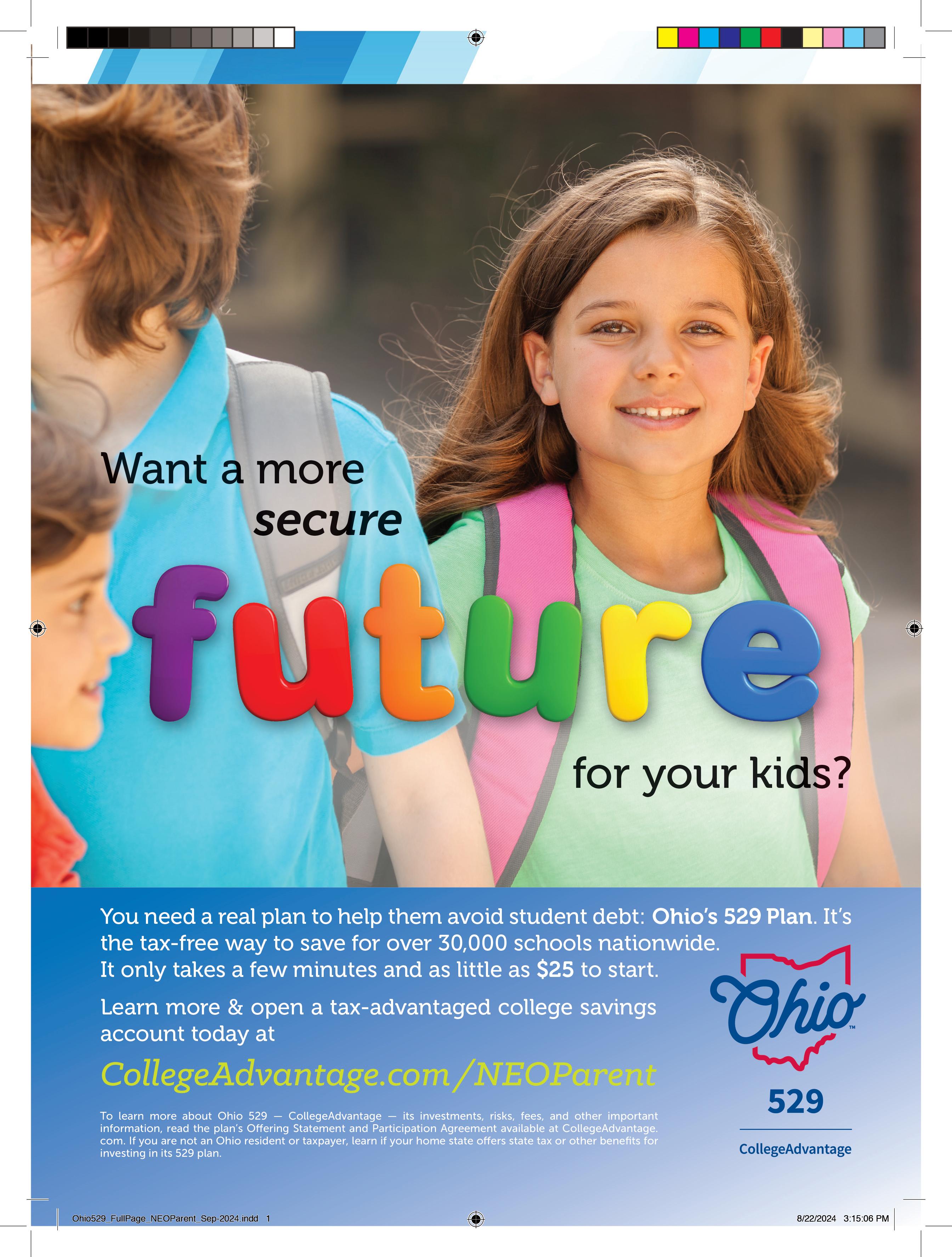
By Shana O’Malley-Smith

It’s the parenting dilemma of the digital age: When should you give your child their first cellphone?
For many families, middle school is when the social pressure kicks in and you start hearing, “Everyone has one but me,” from your tween.
There’s no set age for getting a child a cellphone. Instead, experts recommend weighing factors such as your child’s maturity and your family’s needs to help decide when the time is right.
According to a 2021 report by Common Sense Media, 42% of kids have a phone by age 10, 71% by age 12 and 91% by age 14.
The national “Wait Until 8th” campaign encourages parents to delay giving their child a smartphone until at least eighth grade. The parenting campaign links early smartphone use to increased anxiety, disrupted sleep and exposure to social media pressures that can lower self-esteem. According to the campaign, delaying a phone also gives kids more
time to build face-to-face social skills, develop independence offline and learn how to manage responsibility in smaller ways before tackling a device that puts the entire world at their fingertips.
Still, many parents find that middle school is exactly the time when a phone becomes useful — and sometimes necessary. Whether you’re managing sports practice drop-offs or your child is hanging out at a friend’s house, having a direct line of communication provides peace of mind.
Phones open a whole new world for tweens, which can be useful and risky. Setting clear rules and safety measures from the start helps your child use their device responsibly. Here are some tips for keeping your tween safe and setting healthy boundaries.
Having a phone doesn’t have to mean unlimited access. Kid-friendly devices allow only calls and texts, offer built-in parental controls and block internet or social media access. Consider what your child will primarily use the phone for, and how much access feels appropriate.
Talk about when and where the phone can be used and how long your child is allowed on it at one time. A written phone contract between you and your child can help make boundaries clear
It’s OK for your child to have limited access to social media apps until your family is completely comfortable with him or her using these platforms. Talk to your child and let them know their safety is your priority. It’s best to set limits early, instead of taking them away. Start slow and introduce new apps when you feel they are appropriate for your child.
Remind your child screenshot of messages and photos can happen and be shared without their consent. A good rule of thumb: Don’t type anything in a message that you wouldn’t feel comfortable saying out loud. Also, they shouldn’t take photos of body parts or private areas such as locker rooms or bathrooms, which is not appropriate — and can come with legal consequences.
MONITOR WITH TRANSPARENCY.
Use parental controls to track screen time and set limits. Be upfront with your child about how you’ll monitor their usage. Spot checks are reasonable, but reading every message without their knowledge can damage trust.
Phones come with risks — from cyberbullying to inappropriate content. If you notice sudden changes in your child’s behavior, such as withdrawal, secrecy or signs of bullying, address it right away with your child and, if needed, a counselor or health professional.
A lifesaver app where you can track your whole family members movements. This is great for tweens/teens. (Some drawbacks: create a rule that kids are not allowed to turn it off). life360.com
The Bark phone might be a great first phone for your kids. It monitors your kids’ social, texts and apps. bark.us
It might be a good option for parental controls for Android users. (Drawbacks: Not user friendly with Apple devices) families.google/familylink
Set screen time limits, block inappropriate websites and apps, and get real-time alerts about cyberbullying or predators in online games. Apple (iOS) and Android devices. aura.com/parental-controls.
The feature for iOS and iPadOS devices that allows parents to set parental controls by managing app usage, restricting content and setting downtime on their child’s device. support.apple.com
By signing this pledge, you promise not to give your child a smartphone until at least the end of 8th grade as long as at least 10 families total from your child’s grade and school pledge. waituntil8th.org
By Aisha Taylor
Are you noticing your middle schooler or tween talking more about the rumors she hears in school? Are you wondering how to help her navigate this landscape? The “rumor mill” consists of discussions that happen behind someone’s back, without their knowledge, and saying things you wouldn’t say if that person were present.
Kristen Hopkins, a mom of five, says, “These discussions are not only unkind, but they also damage friendships. Spreading rumors erodes trust and can ruin relationships. If you hear a friend gossiping about
someone else, it’s natural to wonder, ‘What do they say about me when I’m not around?’”
She adds it all comes down to the golden rule: Treat others how you want to be treated. Nobody wants their private business discussed without their consent, especially when untruths are being shared.
WHY ARE MIDDLE SCHOOLERS PRONE TO SPREADING RUMORS?
Lauren Jasica, assistant principal at Global Ambassadors Language Academy in Cleveland, explains that middle schoolers are especially prone to spreading rumors for a few reasons.
She says that at this age, they’re trying to figure out who they are and where they fit in, and having “inside information” can feel like a way to gain attention or status. They’re also still developing their social skills, so sometimes rumors become an unhealthy outlet for frustration or conflict. While their thinking skills are growing, they don’t always recognize the long-term harm words can cause.
On top of that, Jasica adds, friendships and peer groups mean everything at this stage, so students may use rumors to strengthen certain

bonds or exclude others.
“Technology only adds fuel to the fire, making it easier and faster to spread things without considering the consequences,” she says. “Because tweens are testing boundaries and exploring independence, they may spread rumors just to see what kind of influence they have.”
HOW TO HELP A CHILD WHO HAS BEEN TARGETED BY RUMORS
When a child is the target of rumors, Jasica says the most important step is to respond with care, consistency and clear communication. The first thing parents and educators can do is listen and give the child space to share his or her story, making sure to validate his feelings. Rumors hurt, and it’s important for students to feel understood. Reassurance is also key — reminding the child that they’re not alone and that this doesn’t define who he is can make a huge difference.
“At school, staff should calmly investigate by gathering facts and documenting what’s happening so the spread can be stopped quickly,” she says. Students responsible for spreading the rumor should then be addressed directly and held accountable, while the child who was targeted should be offered support through check-ins, safe spaces and strong peer connections. Communication with families is essential to keep everyone aligned, and children should be guided in building coping skills like confidence and knowing when to ask for help. These moments also provide an opportunity to reinforce school values like kindness, respect and digital citizenship.
HOW TO WORK WITH A CHILD WHO IS SPREADING RUMORS
Working with a student who is spreading rumors requires a balance
of accountability and support. Students need to understand the damage rumors can cause and should be given clear expectations and consequences when their behavior is harmful, Jasica explains. At the same time, she also suggests that they should be offered opportunities to reflect and grow, such as through restorative conversations or time with a counselor.
She encourages parents to reinforce these lessons at home by talking about empathy, respect and the importance of honesty while encouraging their child to build friendships in healthier ways.
“The goal isn’t only to stop the rumor, but to help the student develop the social and emotional skills she needs to manage conflict and relationships more positively,” Jasica says.
HOW PARENTS CAN HELP THEIR CHILD AVOID PARTICIPATING IN RUMOR MILLS
Hopkins suggests being transparent with your child if you have engaged in spreading or sharing rumors by saying, “I understand the struggle. I’ve struggled with this as well.”
Help your child see that it’s a common temptation for many people, but that doesn’t make it right.
“It’s important to get to the heart of the matter and go beyond simply telling your child that gossip is wrong,” Hopkins says. “Help (them) understand that it is unkind. Taking the extra time to have this conversation, even when you’re busy or tired, is important.”
Beyond simply telling kids not to spread rumors, Jasica says it’s important to give them the tools to resist social pressure when it comes up. This means teaching them simple, confident responses they can
use, like redirecting the conversation or making it clear they don’t want to participate in gossip. Practicing these responses through roleplay can make students feel more prepared. Encourage your child to be someone who helps stop the spread of rumors.
Hopkins suggests that kids can learn to take a pause before speaking and ask themselves, “Is what I’m saying kind or loving? Am I being a good friend right now?”
She also recommends that they be proactive and avoid being sucked into situations that look like gossip or rumors.
“If your child sees a bunch of people talking and it appears they are gossiping, encourage your child to not join in,” Hopkins says. “Another great tip is to choose friends wisely. If you know people who tend to gossip, don’t befriend them.”
She adds that although this may be hard initially, in the long run, people will see your child’s good character, which will lead to gaining the right kind of friends.
Jasica believes that creating a school and home culture that celebrates kindness and respect encourages students to make good choices. When children see their peers being recognized for positive behavior, they’re more likely to follow suit. Helping kids build self-confidence and secure friendships makes them less likely to feel pressured to spread rumors.
Encouraging them to think about how they would feel if the roles were reversed helps them build empathy. Together, these strategies equip students with the confidence and compassion to make respectful decisions, even in tough social situations.



Birchwood School of Hawken’s mission is to develop the intellectual skills and character traits that will enable children to become the best versions of themselves and focusing on their ability to benefit others. Birchwood takes responsibility for placing each child on this trajectory by recognizing four components for achieving those goals — challenging academics, systematic character training, small class sizes, and subject specialists. Students graduate prepared to make a positive impact on their communities. To learn more, visit birchwoodschool.org

More than a school, it’s a place to find confidence. Constellation Schools: Parma Community Intermediate and Middle provides an environment where students can thrive. Its dedicated teachers and diverse programs go beyond academics, helping them navigate new challenges, explore their interests and build leadership skills. Staff empowers students to grow into their best selves, preparing them for a lifetime of learning and achievement. constellationschools.com

As an independent and Catholic school, Gilmour Academy is uniquely able to develop the minds and hearts of its students. Gilmour’s identity as an independent school reflects a commitment to rigorous academic programming, smaller classes and a variety of real-world opportunities. Gilmour’s Catholic identity means students are learning in an environment that is inclusive, thought-provoking and rooted in the Holy Cross tradition. Gilmour empowers students of all faiths to grow spiritually. Through its comprehensive curriculum, faith-based tradition, commitment to service and emphasis on leadership, Gilmour educates the whole person. gilmour.org

Hawken’s Middle School program focuses on building strong academic skills while placing an increasing emphasis on personal responsibility. It partners with parents to ensure that students receive the optimal balance of structure, freedom, nurture and support that will enable them to successfully navigate this exciting and challenging transition into adolescence. With an emphasis on hands-on learning, interdisciplinary approaches and student choice, students become active participants in their education. To learn more, visit hawken.edu/academics/middle-school


Choosing a school is choosing a second home for your child. At Hershey Montessori School, families find more than academics — they find a place where children are deeply known, nurtured and inspired. From infancy through adolescence, Hershey offers hands-on, purposeful learning across two Northeast Ohio campuses. Rooted in the Montessori approach to education, students grow with confidence, empathy and independence. For parents seeking a school that honors the whole child, Hershey is where meaningful education begins. hershey-montessori.org

Julie Billiart Schools, a private, Catholic network of kindergarten through eighth grade schools in Akron, Brecksville, Lyndhurst and Westlake, educate and empower children with mild to moderate learning and social differences like anxiety, ADHD, dyslexia, autism and executive function needs. Students experience small student-to-staff ratios and onsite therapies including art, behavioral, music, occupational and speech. They also offer Begindergarten, a full-day kindergarten readiness program for the youngest learners. Learn more at juliebilliartschool.org or call 216-716-8318.
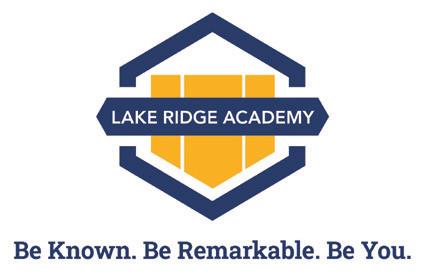
Lake Ridge Academy is the only independent, college preparatory school on Cleveland’s west side. Its junior kindergarten through grade 12 coeducational curriculum offers a unique blend of rigorous academics, extracurricular activities, and a focus on wellness and character development. With a student-teacher ratio of 8:1, their devoted faculty provides personal attention to help every student thrive. Come visit its 93-acre campus and see the Lake Ridge difference. The next Preview Day is Nov. 14. Register at lakeridgeacademy.org/admissions/visit.

Laurel is an independent day school for girls, K-12, with a co-ed Early Childhood School. Laurel students come from over 70 communities in Northeast Ohio. Laurel has two campuses, the 11-acre Lyman Campus is in Shaker Heights and the 150-acre Butler Campus is in Novelty. The Butler Campus is home to competitive athletics, full-time outdoor experiential learning for Grades 3-5, Northeast Ohio’s first Outdoor PreK, and the new Ruhlman Family Center opening in January 2026. Learn more about Laurel at its Open Houses on October 9 and 23. Visit laurelschool.org/visit for details.

Menlo Park Academy is the state’s only tuition-free school for gifted children in kindergarten through eighth grade. The school offers an innovative, accelerated curriculum, including nine high-schoolcredit classes, the opportunity to learn alongside like-minded peers and a faculty dedicated to meeting the unique needs of gifted children. Students can explore their passions, build friendships and find belonging, as well as academic and social emotional success. Menlo Park Academy is the #1 charter elementary, #1 charter middle school, ranked #13 of all kindergarten through fifth grade Ohio public schools (niche.com). menloparkacademy.com



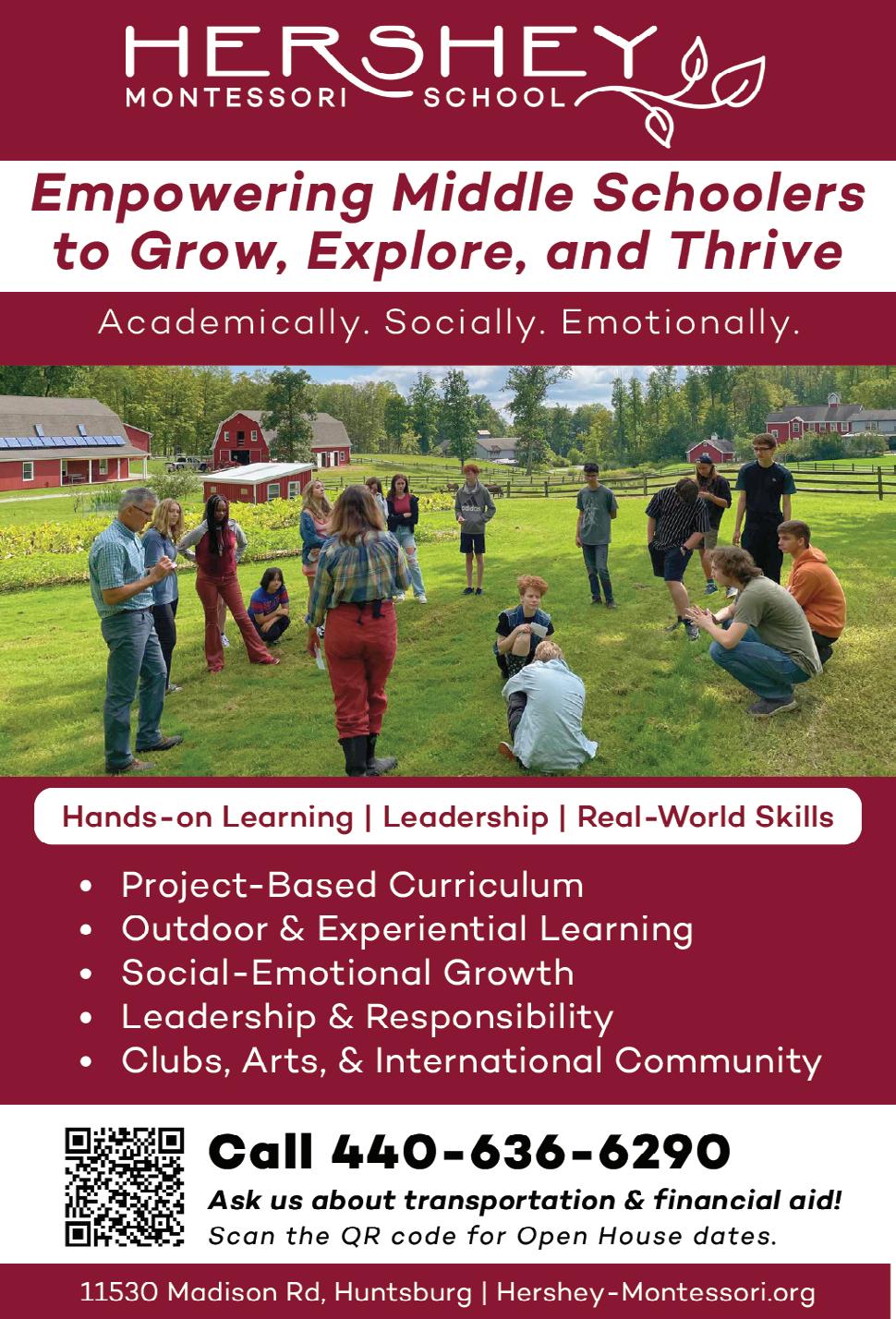
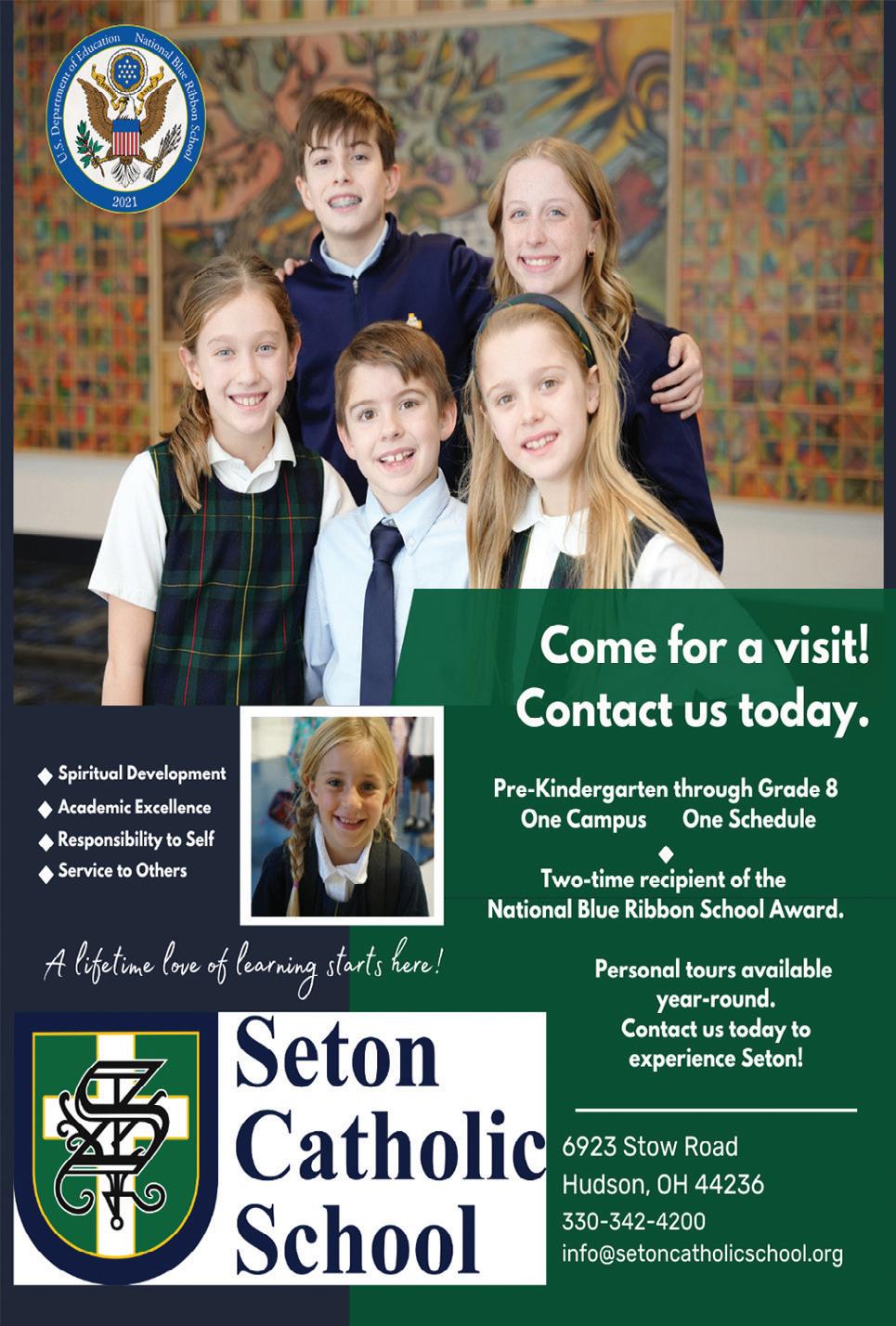

Seton Catholic School (pre-kindergarten through grade eight) is a U.S. Department of Education National Blue Ribbon School. A lifetime love of learning starts here. Young hearts and minds develop into thoughtful, educated students — ready to thrive and grow. Immersed in the humanities, arts and sciences, foreign languages, mathematics and environmental education — students are nurtured in a setting of constructive and personalized learning. Innovation and tradition unite with guided responsible use of technology, successfully integrated with time-honored instruction. setoncatholicschool.org

Spring Garden Waldorf School is one of only two accredited Waldorf schools in Ohio, and it has been educating children from the surrounding five-county area for 44 years. Families come to Waldorf education because they’re ready for something different. Its curriculum challenges students with hands-on learning, critical thinking and creative expression. By engaging the whole child with a multi-disciplinary approach, it nurtures a lifelong passion for learning. Discover education that engages, inspires and empowers. sgws.org

The Future Begins Here. St. Hilary School in Fairlawn serves students in grades kindergarten through 8th grade in a faith-based environment with a curriculum that challenges and accommodates diverse learning abilities. The average student-teacher ratio is 20 to 1. Special offerings include Spanish, French, Chinese, religion, art, music, physical education, technology, advanced math and enrichment opportunities. Many extracurricular activities, as well as auxiliary, remedial, clinic, lunch and extended care services are available. 645 Moorfield Road, Fairlawn, 330-867-8720, ext. 343, st-hilaryschool.org

At University School, each boy is free and supported to let his true self thrive. The faculty at University School are invested in every boy’s interests, his mental and emotional health, as well as his academic development. Built to match how boys learn best, the renovated and expanded Middle School building opened in Fall 2025. US is ranked Ohio’s #1 private K–12 School by Niche. Its open house is November 2. Learn more at us.edu/visit.
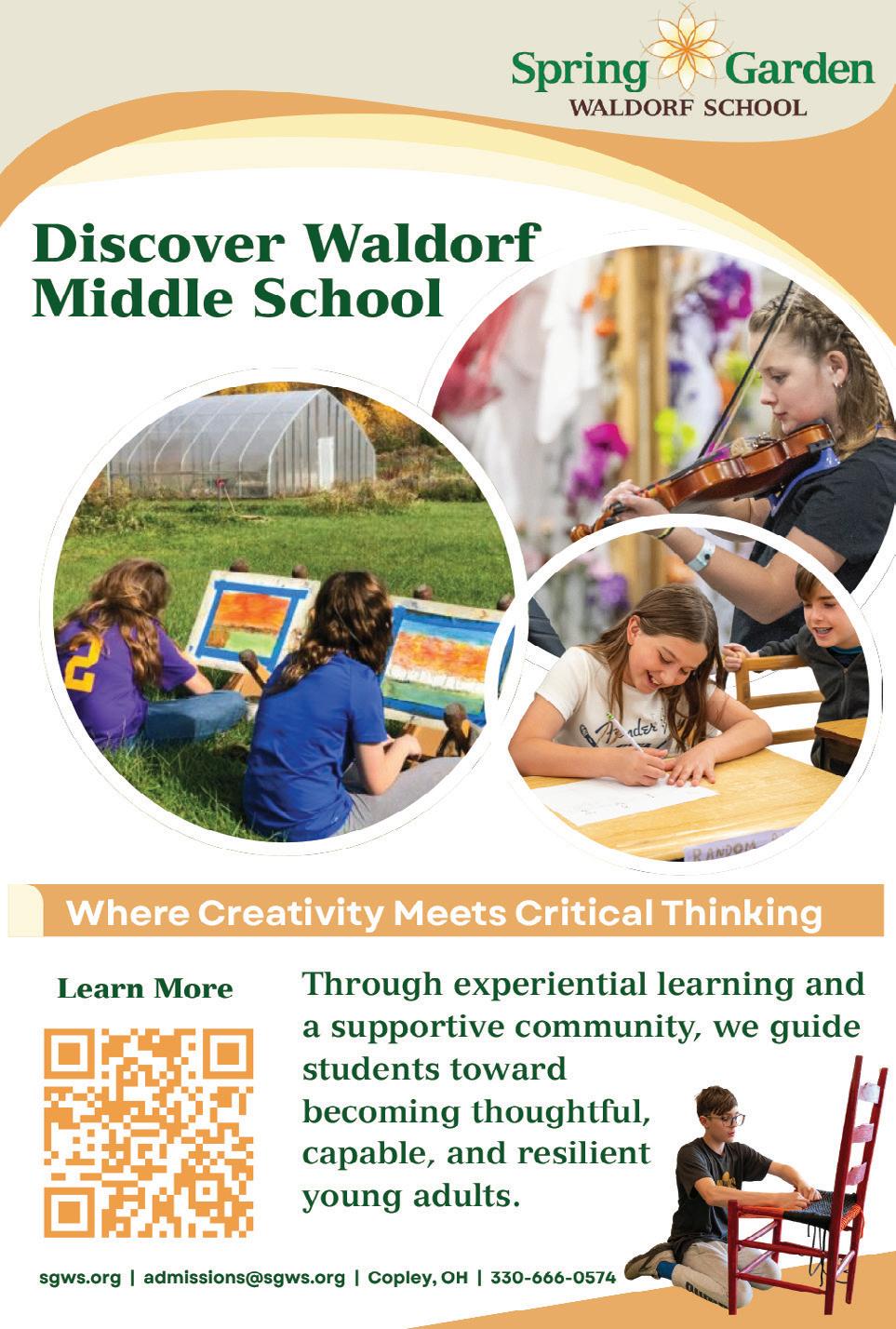

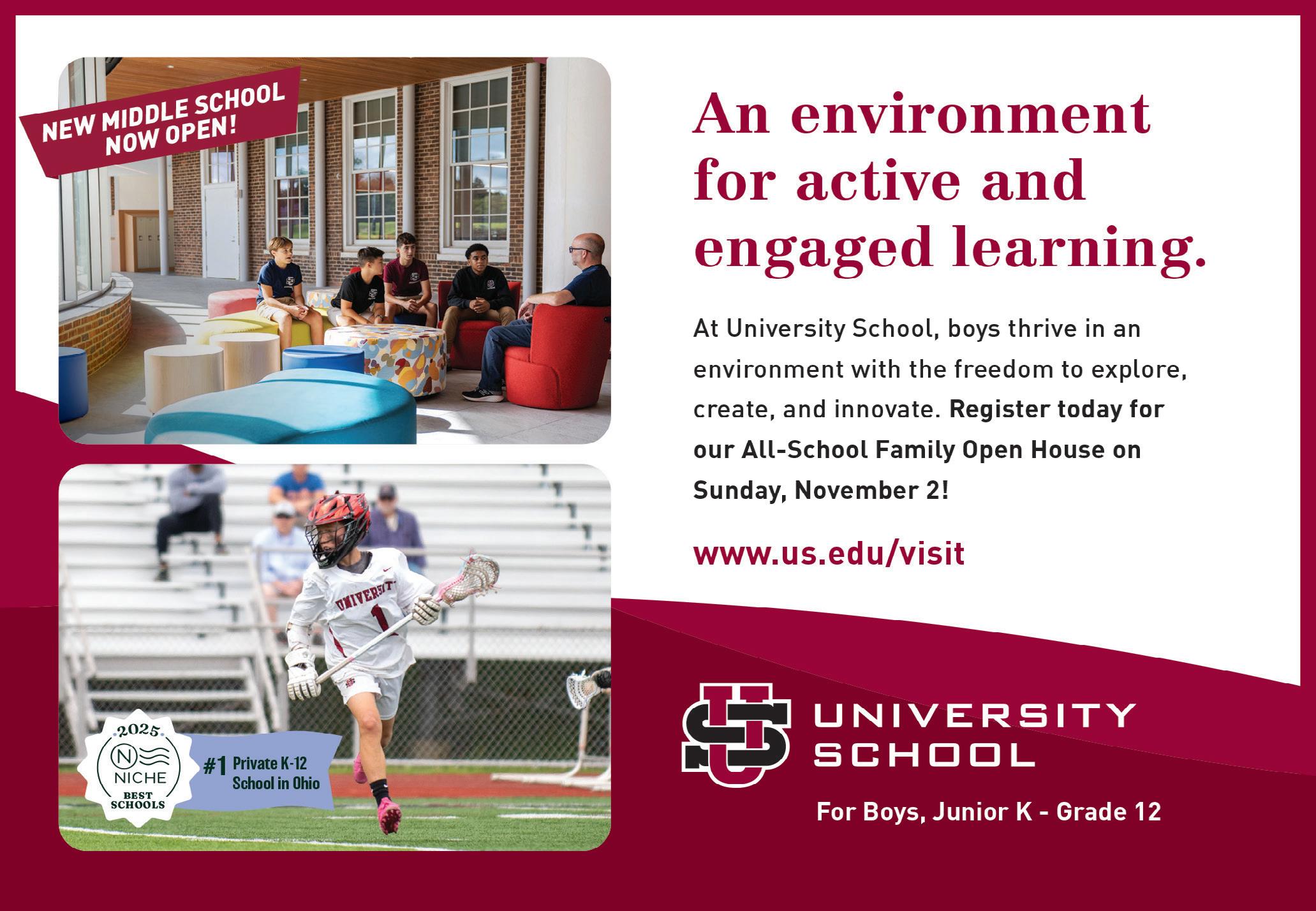
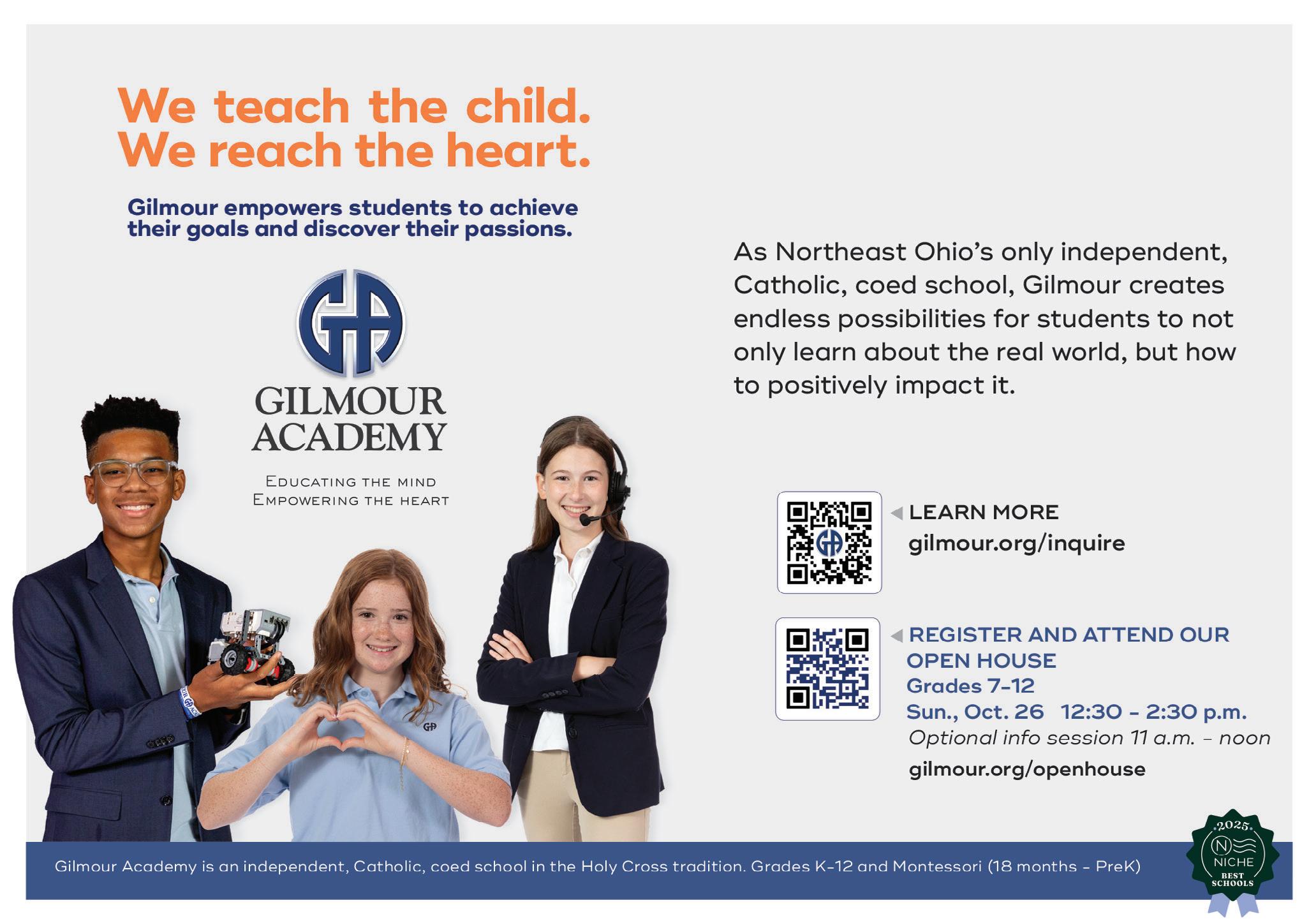


Each year, nearly 8,000 students take part in Stop the Hate through workshops and tours, with about 3,000 students entering the contest. With the help of more than 400 volunteer readers, the program names 30 contest finalists, recognizes outstanding teachers, and awards $100,000 in scholarships and prizes to students who raise their voices against hate.
Since its inception, Stop the Hate has reached more than 50,000 students across Northeast Ohio and awarded over $1.7 million in scholarships, prizes, and educational grants, making it one of the largest opportunities of its kind in the nation. Rooted in the Jewish value of respect for all humanity, the Maltz Museum is proud to provide a platform where young people of all backgrounds can speak out against bullying and hate.
What’s New this Year?
This year, the grand prize essay scholarship has been increased to $30,000. In addition, responding to the growing interest in poetry, the program is expanding poem submission to include all students in Grades 6-12 across our 15-county region.
The contest is open to Northeast Ohio students in grades 6–12 who live in or attend public, private, or home school in one of the following counties: Ashland, Ashtabula, Cuyahoga, Erie, Geauga, Huron, Lake, Lorain, Mahoning, Medina, Portage, Stark, Summit, Trumbull, and Wayne counties.
How to Participate in the Contest
Students are invited to submit a personal essay (500 words or less) or a poem that reflects on real-life experiences they have experienced, witnessed, or learned about hate, exclusion, or injustice—and how it inspired them to take positive action and encourage others to do the same. Submissions should be made independently by students at maltzmuseum.org/sth/contest. Schools and educators are encouraged to support participation, and while a visit to the Maltz Museum is encouraged, it not required.
Inspiration for
This year, the program draws inspiration from the words of Stop the Hate alumnus, Alex Stojsavljeciv, 2011’s Grand Prize Winner who wrote: “I have high hopes that one day I can look down upon the world and be glad in knowing that I had a part in it. In that regard, I believe I am just an ordinary teenager – I am living my life and creating a world that I want to live in.”
Like Alex, students are asked to reflect on the quote and use their writing to imagine the world they want to live in.
Submissions are due in the essay category on Thursday, January 15, 2026. The deadline for poetry submissions is Thursday, January 22, 2026.
About Stop the Hate:
In 2025, the total amount of scholarships, prizes, and anti-bias education grants awarded through the contest to Northeast Ohio students, teachers, and schools will be $1.7 million. The Maltz Museum’s Stop the Hate program is made possible through the generous support of board and committee members, volunteer readers and judges, sponsors and partners, and our members and visitors. For more information about the program, please visit maltzmuseum.org/learn or contact education@mmjh.org.

37501 Center Ridge Road, North Ridgeville 440-327-1175
lakeridgeacademy.org

Jr. K-12 Preview Days: November 14, and April 17
Enrollment: 400
Grades served: Jr. K-12
Student to teacher ratio: 8:1
Tuition: $11,600-$22,000
Power Points:
The Only Jr. K-12 Private School on Cleveland’s West Side
Lake Ridge Academy is a unique educational oasis on a stunning 93-acre campus in North Ridgeville. Students from over 35 communities and 13 countries flock here for our exceptional learning experience, where relationships, wellness, and belonging are at the heart of everything we do.
Small Classes, Big Impact
Our commitment to small classes and exceptional teachers means your child will receive personal attention and a deep understanding of their unique learning style. Our teachers are passionate about their subjects and dedicated to inspiring a love of learning.
A Community of Learners
Lake Ridge Academy isn’t just a school; it’s a community. Our students have the opportunity to interact with peers from all grade levels, fostering leadership, collaboration, and lifelong friendships.
Academic Excellence Meets Individual Needs
We believe every student is an individual with unique abilities, strengths, and interests. Our rigorous curriculum is designed to challenge and inspire, while our personal approach ensures each student can reach their full potential.
• 100% of graduates attend a four-year college or university
• 73% of students receive financial aid
• Students travel from 35 communities and 13 countries to attend Lake Ridge

Beyond the Classroom
At Lake Ridge Academy, we believe in a wellrounded education. Our beautiful campus offers a serene setting for exploration and discovery, while our extracurricular programs cater to various interests, from athletics and arts to STEM and community service.
A Place Where Everyone Belongs
We’re committed to creating a supportive and inclusive environment where every student feels valued and respected. Our focus on wellness, both physical and emotional, ensures that our students can thrive academically and socially.
Ready to Join Our Community?
Discover why Lake Ridge Academy is the perfect choice for your child. Schedule a tour today at lakeridgeacademy.org/admissions/visit.
• 93-acre campus 25 miles outside of Cleveland
• The class of 2025 received over $9.4 million in merit scholarships
• 70% of the class of 2025 was accepted to their top-choice school
• Five Graduation Certificate programs offered, including Business and Entrepreneurship, Fine Arts, Global and International Studies, Engineering and Innovation, and Scientific Research.












❝








